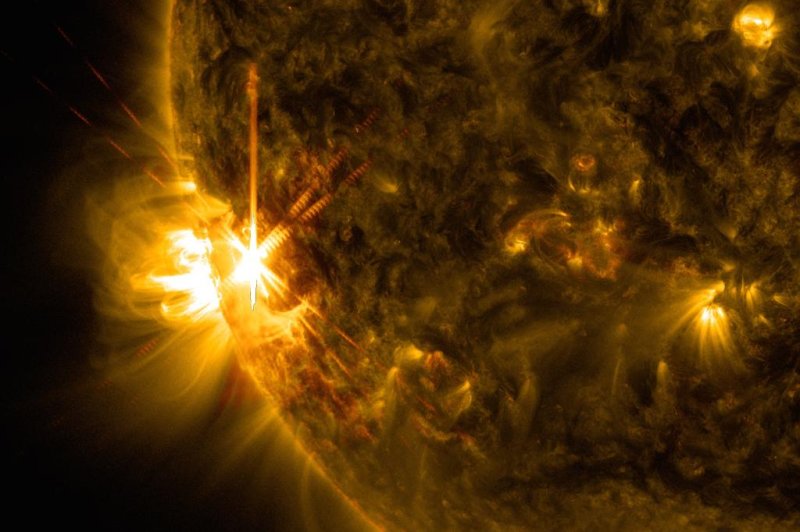WASHINGTON, June 11 (UPI) -- The sun spouted another giant solar flare today, its third in two days. And yet again, one of NASA's many satellites was there to capture images.
Tuesday, NASA's space-based Solar Dynamics Observatory captured two giant eruptions of gas from the sun's surface. Wednesday, the same sun-watching satellite caught Earth's home star belching out yet another X-class flare -- the largest category, with M-class flares slightly less impressive, and C-class being the smallest.















